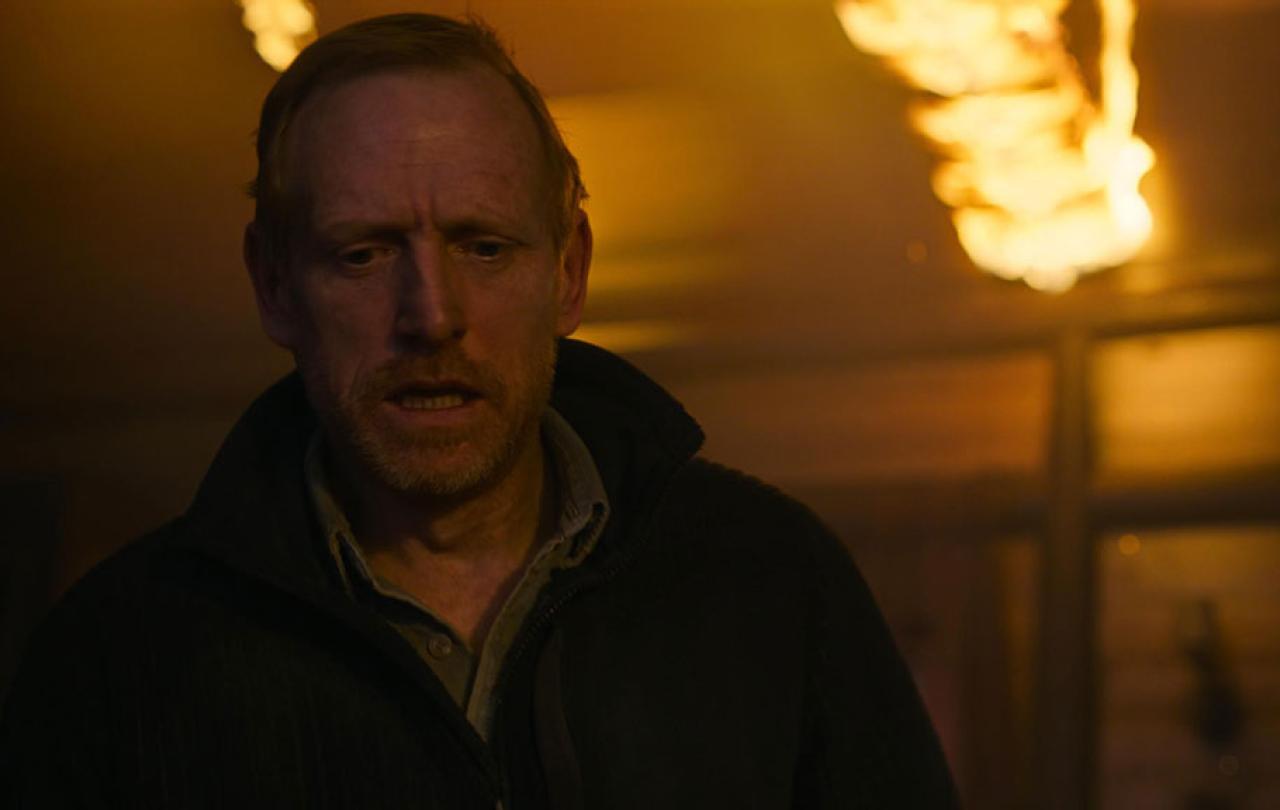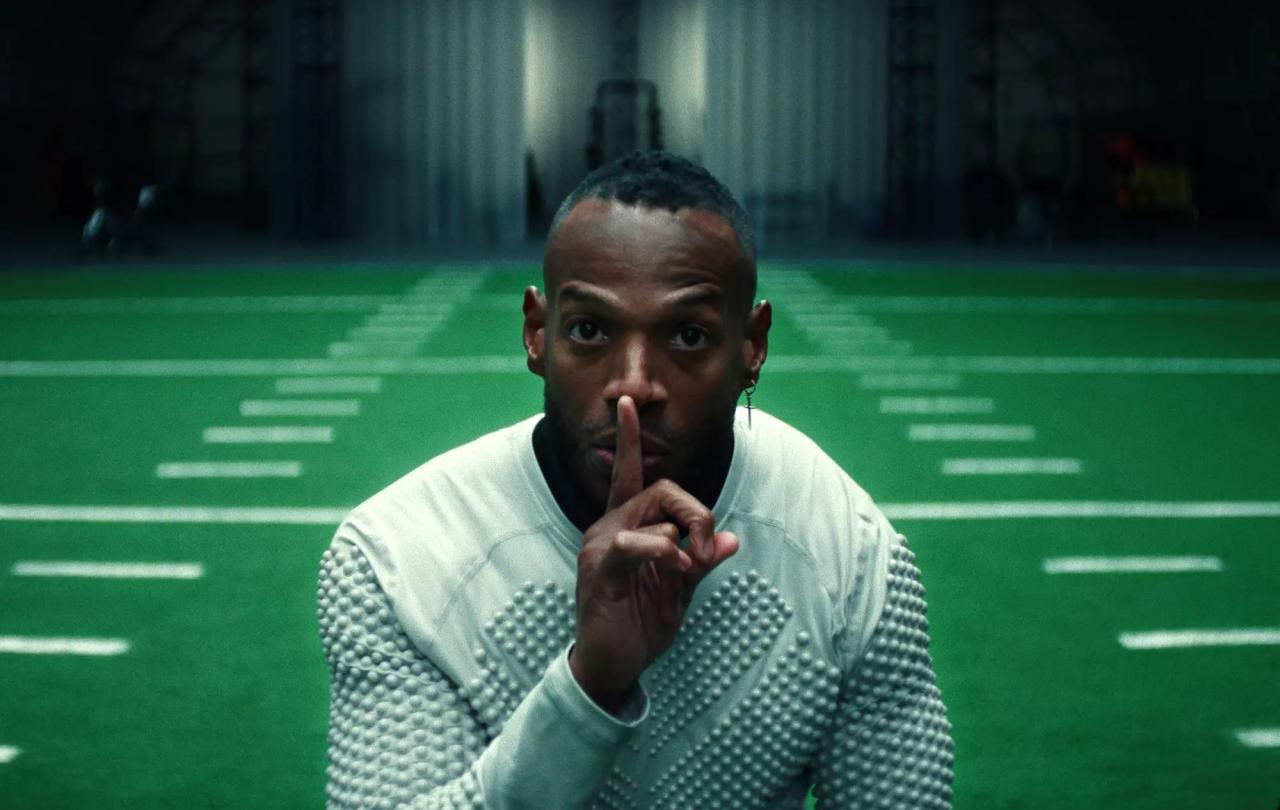
We knew we were in trouble when he started quoting the Bible. If there is one rule we should all follow in a zombie apocalypse it is not to trust the isolated community of believers huddled around a Bible-quoting preacher. You know the plotline. The one that never occurs in Star Trek: the crew of the USS Enterprise land on a paradise-like planet only to discover that everything is exactly as it seems. No. The rules of genre television must be upheld. If it seems too good to be true, it probably is.
This was the strong suspicion my eldest child and I immediately leapt to while watching season one, episode eight of HBO’s The Last of Us. If you haven’t seen it, it’s a zombie apocalypse drama, a bit like The Walking Dead, but with more giraffes and fewer zombies. Is it a virus? Is it radiation? No, it is a fungus that has zombified the masses. Starting with a few isolated infections here and there it rapidly mushroomed (I guess) to turn the placid citizens of the world into manic flesh-eaters. All I’m saying is keep applying the anti-fungal toenail cream, it may be the only thing standing between us and the collapse of civilisation as we know it.
So, when episode eight opened with a previously unknown character quoting the Bible to a fearful flock hiding in a diner, we knew things weren’t going to turn out well. The signs were all there. He was almost definitely a paedophile, possibly a murderer, and very likely a cannibal. As it turned out we’d hit a perfect straight: three for three. He was all of them. I probably should have issued a spoiler warning for that one, but to be honest if you didn’t see it coming The Last of Us probably isn’t for you. You’d probably be happier watching something more sedate. Silent Witness anyone?
Needless to say, the episode provoked no small amount of theological commentary in our household, mainly querying why it is that anyone exhibiting even a modicum of Christian belief in shows like this, almost always turns out to be completely unhinged. Why do the righteous always have something wrong with them? Why are the god-fearing always so god-damn weird?
Pray and take the pills
Just to be clear, I’m not a murderer, nor a paedophile, nor a cannibal (and I have no plans), but somehow the prejudice that Christians must be crazy has come to influence how I view my own spiritual history. I have inadvertently imbibed the simple naturalistic logic that if I am a Christian then there is something wrong with me. Some part of me shakes hands with Freud and retrospectively attributes my conversion to neurosis, a coping strategy, a crutch. The assumption that the only reason I would believe something so unusual, so out of step with the people I spend most of my time with, is that I am weird. Quietly, without realising it that is how I have come to view it - I need God because I am weak.
Of course, religion can and often is used as a coping strategy. Leading psychologists of religion, like Kenneth Pargament, have made entire careers out of studying this phenomenon. For several decades, he and his collaborators have demonstrated pretty conclusively that people use religion and spirituality as potent sources of coping with the pain of life. From this perspective, religious conversion can be viewed as a transformation of significance. When the things we previously relied on to give us a sense of meaning and stability fail us, when our adjustment to life falls apart and cannot be put back together, we give up trying to conserve what was previously meaningful and instead take a transformative leap toward a new view of what matters to us. When the going gets tough, the tough get going. When the going gets too tough, some people turn to Jesus.
But there are many ways we can use religion to cope, and over the years Pargament and his collaborators have identified a few of them. Some people defer everything to God, they cope by thinking God will do everything for them, they plead for Him to intervene. Others are self-reliant, they may believe in God, but they don’t expect much from Him; for them prayer is more like therapeutic meditation than anything medically effective. Others cope in a collaborative way. They don’t leave it all to God, nor do they think everything centres on them. They take responsibility for their lives, but view God as a companion, a collaborator, a conversation partner through all the vicissitudes of life.
It probably comes as no surprise that in studies of religious people dealing with chronic illness, these styles of coping significantly predict prognosis over time. There are many ways it can help us, and some of them are more admirable and effective than others. Those who leave it all to God usually do worse, those who think it’s all down to them do better, and those who pray and take the pills do best. Coping with a painful and bewildering world is undoubtedly one of the benefits of religious belief. It’s one of the things it does for us, but it is not what religion is at core. It may be a function of belief but not its essence.
That first intimation of divine presence... It was the teaser trailer of a movie I was yet to see. A tiny taster from an infinite menu.
As a twelve-year old boy, lurking at the back of an old Methodist church, waiting in silence for the possibility of something sacred to be unconcealed, I was not the kind of child anyone at school would ever admire: lonely, bullied, ignored. Relegated to the corner of the playground reserved for the outcasts and untouchables, the overly sensitive gay kid, the boorish tractor enthusiast, and the Dungeons and Dragons players. When I revisit the moment of my first truly transcendent and mystical experience of God, it’s tempting to write it off as an imaginative invention designed to anaesthetise the pain of social exclusion. I needed it to be true, so I made it up.
Yet there is more to it than that. That first intimation of divine presence was the beginning of a lifelong quest to experience more. It was the teaser trailer of a movie I was yet to see. A tiny taster from an infinite menu. And in the years that followed I pursued it. To begin with, that strange sense of presence was elusive. I couldn’t generate it under my own steam but ran across it every few months, in a small group, a church service, a prayer meeting, a piece of music. Over time the frequency increased, as I learned patterns of prayer and spiritual practice. Eventually, decades later, it stabilised into an almost daily occurrence. I discovered the western mystical tradition, a historical lineage that made sense of what I was sensing, and to which I could belong. I made myself at home with Augustine of Hippo, Julian of Norwich, Ignatius of Loyola, Teresa of Avila, John of the Cross, Thomas Merton. My new extended family was large and varied. They became my friends and spiritual guides. I had a history.
When I think of the creatives I know, the artists, writers, actors, and musicians I have spent time with, I notice that for many of them their art is a response to the tragedy of life. But I rarely judge their work on the loneliness and pain that drives their compulsion to create. All too often it is the aching that lingers just under the surface of their work that makes it poignant and affecting. It is not just the beauty of what they create that moves me to tears, it’s the heartbreak out of which it is composed.
My spiritual journey seems somewhat similar, a creative enterprise launched and sustained by a new insight into the nature of the world. Faith is more like a new way of seeing, than a new set of propositions to believe. If I’d been happy and fitted seamlessly into the fabric of social life, I doubt I’d have been open to the experience or able to recognise it when it occurred. But just as we might hesitate to reduce an artist’s work to little more than psychological self-help, I find myself increasingly reluctant to view my spiritual history as just an expression of my own neurosis. There is another way to tell the story, one that emphasises not so much the problems that drove me to God, but the presence that drew me to Him. There is more to the story than my own neediness and, in the final analysis, when the zombie apocalypse comes, at least I have retained sufficient sanity to avoid the guy with the Bible.





